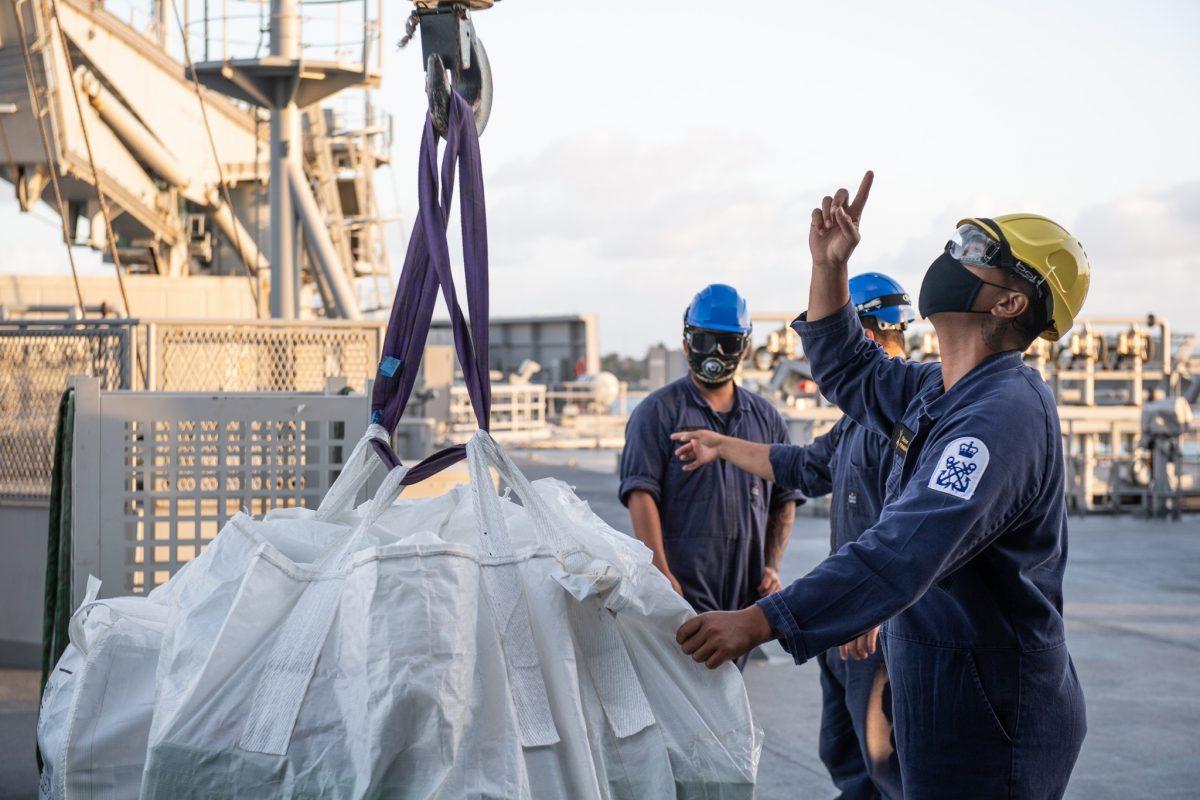
US Indo-Pacific coordinator Kurt Campbell observed on 11 January that the Pacific islands might be the part of the world ‘most likely to see certain kinds of a strategic surprise—basing or certain kinds of agreements or arrangements’. He went on to say that the US has ‘a very short amount of time, working with partners like Australia, like New Zealand, like Japan, like France, who have an interest in the Pacific, to step up our game’.
Campbell’s comments highlight that partner states are increasingly looking to cooperate in response to heightened geopolitical interest in the ‘crowded and complex’ South Pacific. But security cooperation in the region is best described as a patchwork, rather than a coherent architecture, which can lead to challenges of targeting and overcrowding , but also may allow for agility and creativity.
The nature of security cooperation has been tested by two recent crises: the riots in Solomon Islands in November 2021 and the volcanic eruption and tsunami in Tonga earlier this month. Both have underscored several features of regional security cooperation.
The first feature is that there’s no regional institution for humanitarian assistance and disaster relief, nor has the Pacific Islands Forum played a prominent role in coordination. New Zealand was the first to respond to the Tongan disaster under the FRANZ Arrangement, while the Australian-led deployment to Solomon Islands has occurred under the auspices of the 2017 Australia – Solomon Islands security treaty, rather than under the Pacific Islands Forum’s 2000 Biketawa Declaration.
This reflects the second feature: the often unspoken ‘rule of thirds’ between the major partners: that Australia should lead crisis responses in Melanesia, New Zealand in Polynesia, and the US in Micronesia.
Australia led the response in Solomon Islands by deploying police and defence personnel. New Zealand and Fiji supported the Australian response with peacekeepers, and Papua New Guinea deployed separately under a bilateral agreement.
New Zealand was first to send a P-3 Orion surveillance and reconnaissance aircraft and has since sent three naval vessels and a C-130 Hercules with supplies to Tonga. Australia’s contribution includes two P-8A Poseidons, a C-17A Globemaster and a C-130, as well as HMAS Adelaide, one of the Royal Australian Air Force’s two landing helicopter dock ships. This reflects a third feature: while New Zealand and Australia are considered the primary security providers in the South Pacific, New Zealand can’t match Australia on military capability to mount substantive crisis responses.
However, a Covid-19 outbreak on the Adelaide en route to Tonga signal a fourth feature, the ‘wild card’ of the pandemic. Overall, the nature of partner assistance is evolving to be less hands-on. Border closures have necessitated contactless aid delivery and highlighted the importance of a locally led disaster response. This dynamic was already evident in the response to Cyclone Harold in Vanuatu in 2020.
The Tongan response also reflects a fifth feature: overcrowding. This is most clearly demonstrated by the range of actors and responses, which, in a non-pandemic context, would raise questions about the host country’s absorptive capacity. For instance Japan has sent two C-130s and a vessel to assist, the UK sent supplies on Australia’s LHD, and Fijian engineers are ready to be embedded with the Australian Defence Force. France has deployed two patrol boats with emergency aid. The US has deployed USS Sampson to assist with damage assessment and supplies and has offered support through its closest relationship with Tonga, the Nevada National Guard. While Australia is coordinating its response with New Zealand and France under FRANZ, it’s unclear whether Fiji, Japan, the UK and the US are de facto coordinated under the arrangement. This brings us back to the first feature: the absence of overarching regional coordination.
A sixth feature of cooperation is how ‘traditional’ partners such as Australia, New Zealand, Japan, and the US will respond to China’s increasing involvement.
In December last year, Solomon Islands accepted a Chinese offer to send police personnel and equipment after the Solomon Islands government declared an ‘urgent need to strengthen Royal Solomon Islands Police Force capability and capacity to respond to future unrest’. Given that Australia led (with support from New Zealand and Pacific island states) a substantial capacity-building program for the RSIPF during and after the Regional Assistance Mission to Solomon Islands, it’s unclear how Chinese police officers will build upon that work.
China has sent assistance and reportedly offered to help rebuild parts of Tonga destroyed by the tsunami. Tonga accepted a loan from China for reconstruction costs after riots in 2006 destroyed much of Nuku’alofa, which has generated substantial commentary in Australia and the US about the geopolitical consequences.
What role Australia (particularly through the Australian Infrastructure Financing Facility for the Pacific), the US, Japan and the UK (which have all signalled their interest in greater infrastructure investment in the region) will play in financing the longer-term reconstruction effort in Tonga will be a test of their commitment to the region and of their intent to deepen cooperation.
This raises the final, and most important, feature of security cooperation: the question of how well the agency of Pacific island states and peoples is recognised and respected by partners. While much of the language used by partners during the Solomon Islands and Tongan crises has recognised that affected states and peoples must drive the nature and delivery of the response, there are questions about the ‘accountability gap’ in the provision of security assistance generally.
The question of who is accountable to whom in the provision of security assistance is important when the interests of partner states, Pacific island governments and Pacific peoples are not necessarily aligned.
For the moment, there’s agreement about the need for urgent disaster response in Tonga. But, as Campbell’s comments signal, once the reconstruction phase gets underway, geopolitical concerns will again rise to the fore and it remains to be seen whether partners will cooperate or crowd the region.